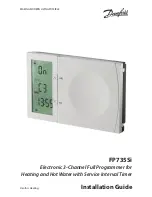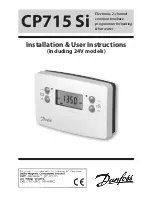
19
Keeping the World Flowing
Start-up
10 START-UP
10.1 Power supply
Prior to starting the actuator up, check the minimum/
maximum supply pressure displayed on the name plate (see
section 4.2).
Ensure that the actuator should not be exposed to pressure
exceeding to the maximum rating as indicated on the
nameplate.
Verify that the medium composition (e.g. filtration,
hydration) corresponds to that for which the actuator was
manufactured.
Contact Rotork to check the compatibility of the
actuator with the chemical composition of the supply
medium.
Depending on the control circuit design,
pneumatically powered actuators may exhaust the
power supply gas into the atmosphere during normal
operation. This may present an unacceptable hazard in
some applications.
10.2 Pneumatic connections
• Before connecting the actuator to the pneumatic supply
line, verify metric or imperial threads, verify sizes of pipes
and fittings according to applicable plant specifications, in
order to guarantee the air flow for a proper operation of
the actuator.
• Take every precaution to remove any solid or liquid
pollutant from the pipe work, to avoid actuator damages
to or reduced of performance. Clean the inside of the
connection pipes by washing them with a suitable
detergent and by blowing air into them.
• The connecting pipes must be properly shaped and
fixed so as to prevent stress or loosening of threaded
connections.
Important: For tapered – threaded fluid connections,
apply a thin layer of thread sealing product (Loctite 577
or equivalent) to ensure a good seal.
Connect the pneumatic power source in accordance to
the applicable operating diagram, please refer to specific
project for details.
10.3 Electrical connections
The following instructions are applicable to actuators
provided with electric accessories (such as micro switches,
solenoid valves, etc.).
Check that the supply voltage is the same as stated for the
actuator control components.
The user must guarantee equal voltage potential
between the valve and the actuator and provide
appropriate grounding. It is the responsibility of the final
user to indicate and maintain the earthed connections on
the actuator.
Access to live electrical conductors is forbidden in
hazardous areas unless done under a special permit.
Otherwise, all power should be isolated and the unit
moved to a non-hazardous area for repair.
Electrical connection can be performed as follows:
• Check that no power is present.
• Remove the covers of the electric components.
• Remove the protection plastic plugs from the cable
entries.
• In case the unit is installed in a hazardous area, it is
mandatory to use only appropriately certified reduction
fittings, cable glands, fittings and explosion-proof cables.
• Pay attention to the correct installation of the o-rings of
the cable glands so as to prevent the infiltration of water
and debris inside the electric components.
• Ensure that the cable glands are tightened in the threaded
inlets, so as to guarantee the waterproof and explosion
proof protection.
• The size of the electric supply cable must suit the electric
power demand.
• Insert the connection cables through cable glands and
complete cable gland assembly according to the cable
gland manufacturer’s instructions.
• Connect the cable wires to the terminal blocks in
accordance with the applicable wiring diagram.
• Electric connections are to be made by using rigid
conduits and trailing cables so as to prevent mechanical
stresses in the cable entries.
• On the unused entries of the junction box, replace the
plastic plugs with approved metal plugs, in order to
guarantee a perfect seal and to comply with explosion
safety protection codes.
• Assemble the covers of the electric components, verifying
that the seals and the edges of the covers are in good
condition and clean. No wires nor other objects should
be between the covers and the body of the electric
components.
• Once connections have been completed, check if controls
and signals work properly.
The user is responsible of protecting the actuator and
its components from electrical sparks, surges and lightning
strikes as well as magnetic or electro-magnetic fields.










































